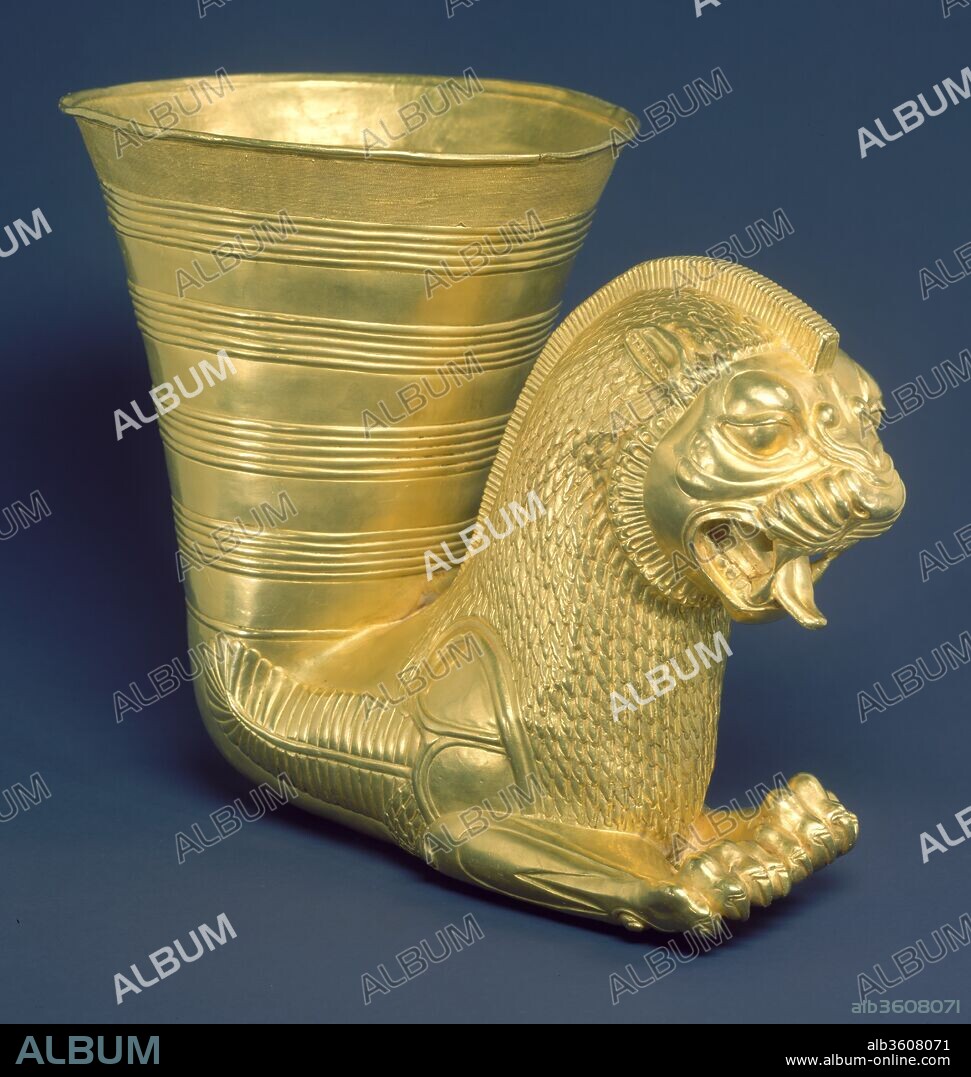alb3608071
Vessel terminating in the forepart of a fantastic leonine creature

|
Ajouter à une autre Lightbox |
|
Ajouter à une autre Lightbox |



Avez-vous déjà un compte? S'identifier
Vous n'avez pas de compte ? S'inscrire
Acheter cette image

Titre:
Vessel terminating in the forepart of a fantastic leonine creature
Légende:
Voir la traduction automatique
Vessel terminating in the forepart of a fantastic leonine creature. Culture: Achaemenid. Dimensions: H. 17 cm. Date: ca. 5th century B.C..
Horn-shaped vessels ending in an animal's head have a long history in the Near East as well as in Greece and Italy. Early Iranian examples are straight, with the cup and animal head in the same plane. Later, in the Achaemenid period, the head, or animal protome, was often placed at a right angle to the cup, as in this piece. In the manufacture of this gold vessel, several parts were invisibly joined by brazing, which demonstrates superb technical skill. One hundred and thirty-six feet of twisted wire decorate the upper band of the vessel in forty-four even rows, and the roof of the lion's mouth is raised in tiny ribs. Typical of Achaemenid style, the ferocity of the snarling lion has been tempered and restrained by decorative convention. The lion has a crest running down his back; his mane has the disciplined appearance of a woven material; and his flanks are covered by an ostrich plume. The inclusion of the plume, a departure from convention, suggests that this lion is winged and has some supernatural significance.
Technique/matériel:
ORO
Période:
Achaemenid
Musée:
Metropolitan Museum of Art, New York, USA
Crédit:
Album / Metropolitan Museum of Art, NY
Autorisations:
Modèle: Non - Propriété: Non
Questions sur les droits?
Questions sur les droits?
Taille de l'image:
3984 x 4200 px | 47.9 MB
Taille d'impression:
33.7 x 35.6 cm | 13.3 x 14.0 in (300 dpi)
Mots clés:
 Pinterest
Pinterest Twitter
Twitter Facebook
Facebook Copier le lien
Copier le lien Email
Email
